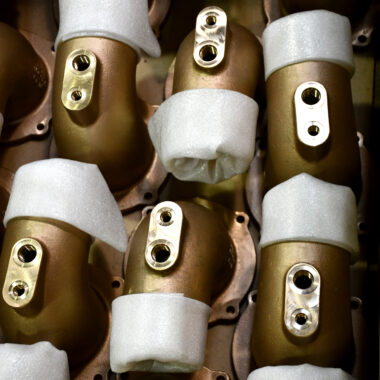Crafting Excellence: How to Accomplish High-Quality Light Weight Aluminum Castings Whenever
In the world of light weight aluminum spreading, the pursuit of excellence is a constant journey that requires a meticulous approach and an eager understanding of the complexities involved. Achieving regular top quality aluminum spreadings demands a comprehensive grasp of the procedures, from choosing the suitable alloy to executing specific mold layouts and thoroughly controlling spreading criteria. The real mastery exists in the capacity to execute these components perfectly to develop remarkable castings every time. As we discover the complexities of crafting excellence in aluminum castings, revealing the essential approaches and techniques that cause impressive outcomes becomes vital for those pursuing quality in this specialized field.
Recognizing Light Weight Aluminum Casting Processes
Aluminum casting procedures, vital in the manufacturing sector, entail the detailed makeover of molten light weight aluminum into strong forms through a series of very carefully regulated steps. Understanding these processes is extremely important to accomplishing high-quality light weight aluminum castings constantly - about aluminum casting. The primary approaches used in aluminum spreading are die spreading, sand casting, and investment casting

Each of these procedures has its advantages and is picked based upon variables like intricacy, volume, and preferred surface of the light weight aluminum casting. about aluminum casting. Comprehending the complexities of these methods is vital for producers intending to generate high-grade aluminum castings constantly
Selecting the Right Aluminum Alloy
Selecting the ideal light weight aluminum alloy is an important decision in the production of high-grade aluminum castings. The choice of alloy considerably impacts the residential properties and qualities of the end product. Different aluminum alloys provide varying levels of toughness, rust resistance, machinability, and thermal conductivity. When selecting a light weight aluminum alloy for casting, it is necessary to think about the particular demands of the application to guarantee optimum performance.
One of the most frequently made use of light weight aluminum alloys for spreading is A356 - about aluminum casting. For applications calling for high stamina, 7075 aluminum alloy is a popular option due to its phenomenal strength-to-weight proportion.
Along with mechanical properties, considerations such as price, accessibility, and post-casting procedures must also affect the choice of the best light weight aluminum alloy. By carefully examining these elements, suppliers can make sure the production of premium light weight aluminum castings that meet the wanted specifications.
Executing Appropriate Mold Design
Establishing an efficient mold design is essential for making certain the effective manufacturing of top notch aluminum castings. Appropriate mold and mildew style plays a significant duty in attaining the wanted characteristics of the last item. To execute an effective mold design, factors such as product flow, cooling down prices, and component geometry have to be very carefully considered.
One trick aspect of mold style is guaranteeing correct filling and solidification of the light weight aluminum within the mold dental caries. This entails developing runner and gating systems that facilitate smooth metal circulation and protect against problems such as air entrapment or insufficient dental filling. Additionally, including cooling channels right into the mold style aids control solidification prices and decrease the threat of porosity or shrinking issues.

Controlling Spreading Parameters

Ensuring Post-Casting High Quality Checks
To maintain the high quality of aluminum spreadings, extensive post-casting top quality checks are necessary. After the spreading process is completed, it is critical to make certain that the final items satisfy the desired requirements and requirements.
Dimensional accuracy is an additional vital element that has to be verified throughout post-casting high quality checks. Dimensions of key dimensions and resistances should be required to verify that the castings adapt the called for requirements. In addition, mechanical properties such as hardness, tensile strength, and impact resistance may need to be evaluated through material screening to make sure that the spreadings possess the necessary strength and resilience for their designated application.
Final Thought
Finally, attaining high-quality light weight aluminum spreadings requires a thorough understanding of the casting procedures, choosing the proper alloy, creating mold and mildews successfully, controlling spreading criteria meticulously, and conducting post-casting quality checks diligently. By complying with these steps, suppliers can consistently generate aluminum castings that satisfy the highest possible criteria of quality and performance.
Accomplishing regular top notch light weight great post to read aluminum spreadings requires an extensive grasp of the processes, from picking the ideal alloy to carrying out precise mold and mildew styles and meticulously managing spreading criteria. The key techniques utilized in aluminum casting are pass away spreading, sand spreading, and investment spreading.
Investment spreading, also understood as precision spreading, involves developing wax patterns that are coated in ceramic to develop molds.Picking the suitable light weight aluminum alloy is a vital decision in the production of premium aluminum castings.Making sure accurate control over spreading specifications is crucial for maintaining uniformity and top quality in light weight aluminum casting manufacturing.